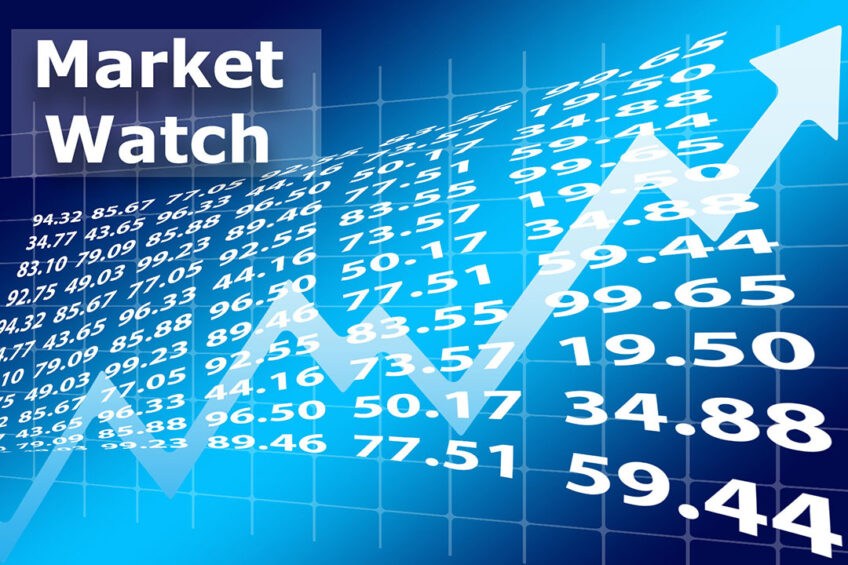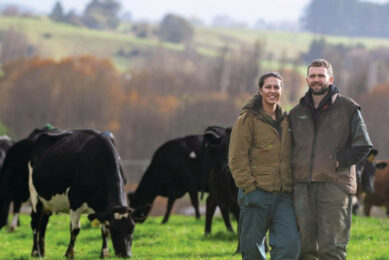Australian dairy: Best ‘spring flush’ on the horizon

Australian dairy is heading for its best ‘spring flush’ in 3 seasons, according to a recent Rabobank report.
Timely rainfall in key regions ramps up the nation’s milk production. Rabobank senior dairy analyst Michael Harvey expects the national milk production to expand by 2.8% in 2020-2021, bringing it back above 9 billion litres for the first time since the 2017-2018 season.
“While national milk production for 2019-2020 finished overall marginally down on the previous year at 8.775 million litres, it was a tale of 2 halves for the season,” analyst Harvey says. “Production was negatively impacted by poor seasonal conditions in the first half of the 2019-2020 season, but timely rainfall across key regions since summer has seen the milk pool begin to recover from December last year.”
 Global dairy market
Global dairy market
Overview of prices for: raw milk, dry whey, skimmed milk powder, cheese and butter.
For the month of June 2020 Australian milk production was already 4.1% higher than a year ago (June 2019). “The ongoing recovery in milk supply will be welcome news for the Australian dairy supply chain,” the report says. “Australia’s exportable surplus will continue to recover with milk supply growth.”
Growth among the global ‘big 7’
According to the Rabobank report there is a delicate rebalancing of supply and demand on the horizon globally. A milk production growth among the global ‘big 7’ dairy exporters seems to collide with a ‘recalibration’ of retail, food service and export dairy demand.
“Milk production growth across the major ‘export engines’ began in Q2 2020 and is forecast to continue expanding into 2021 – a feat not matched since 2018,” the report says. “Despite the disruptions Covid-19 brought to the global dairy markets, Farmgate Milk Prices have been resilient.”
Rabobank forecasts a 1.3% year-on-year increase in production across the ‘big 7’ dairy export regions – the EU, US, New Zealand, Australia, Brazil, Argentina and Uruguay in Q4 2020. It expects this to be followed by a 1% increase in the first half of 2021 and 0.8% growth in the second half of next year.
The report points out dairy commodity prices had rallied in quarter 2 of this year, largely on the back of government support in the form of government purchases, inventory management and fiscal stimulus for consumers. “The outlook for government support is less certain in Q4 and into 2021, elevating the risk of downward price pressure,” the report concludes.
 Covid-19: China to see US$1.6bn added to milk sales
Covid-19: China to see US$1.6bn added to milk sales
Milk is projected to stand at US$26.9bn in 2020, US$1.6bn greater than the previously projected pre-Covid-19 value.
Good year for Fonterra
New Zealand dairy giant Fonterra announced its annual results, with a final Farmgate Milk Price of US$4.67 per kg milk solids and a dividend of US 3.27 cents per share for the 2019-2020 season. Fonterra CEO Miles Hurrell said 2019-2020 was a good year for the Co-op, with profit up, debt down and a strong milk price.
Fonterra has reaffirmed its 2020-2021 forecast Farmgate Milk Price range of US$3.86 – US$4.51 per kg milk solids. Fonterra Chairman John Monaghan said there continue to be significant uncertainties. “Including how the global recession and new waves of COVID-19 will impact demand globally,” he emphasised. “And what will happen to the price relativities between the products that determine our Milk Price and the rest of our product range.”
Fonterra Australia has recently signed an agreement to purchase Australian company Dairy Country for US$13.51m to help drive efficiencies in its leading Australian cheese business. The acquisition will support Fonterra’s core strengths in the US$1.83 billion Australian retail cheese category, where it holds a 23% market share.
 Global dairy market
Global dairy market
Overview of prices for: raw milk, dry whey, skimmed milk powder, cheese and butter.
The overall Global Dairy Trade (GDT) Price Index rose by 3.6% on from the previous event to US$3.092 per tonne. There was a decline at 4 consecutive sessions. US President Donald Trump has announced an additional US$14 billion for agricultural producers facing market disruptions and associated costs because of Covid-19. This is expected to keep cheese prices strong and, in turn, keep milk prices strong as well.
Join 13,000+ subscribers
Subscribe to our newsletter to stay updated about all the need-to-know content in the dairy sector, two times a week.










